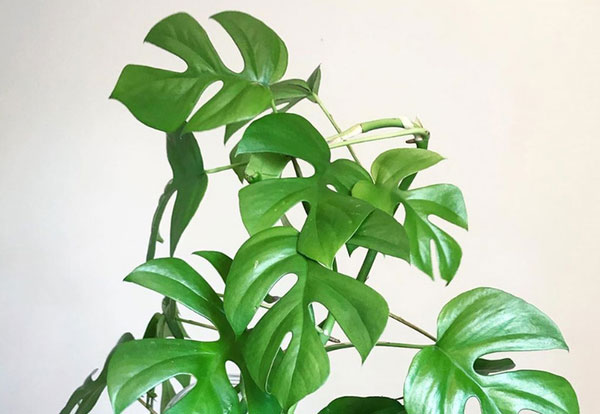Rhaphidophora Tetrasperma (Mini Monstera) Profile
Written by Iris
Jan 16 2023
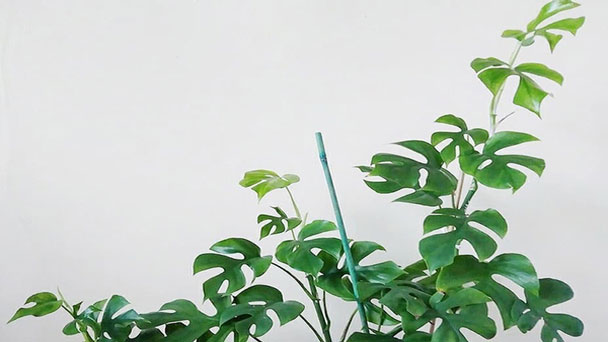
Rhaphidophora tetrasperma is also known as the mini turtle back bamboo. Rhaphidophora tetrasperma is a fast-growing plant with an attractive split leaf, trailing or trailing growth pattern, growth nodes, and aerial roots. It is a beautiful tropical plant that is becoming a popular houseplant.
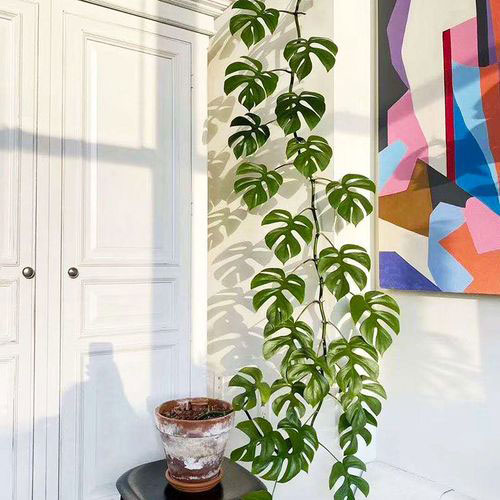
Make sure you have one or more leaf nodes on your cuttings. Roots will form from the lowest leaf nodes, so be sure to place them below the surface of the water or soil.
If you choose to breed your rhaphidophora tetrasperma plant in water, you should keep the environment fresh and change the water at least once a day. When the roots are about 1-2 inches (2-5 cm) long, the cut will be ready to transfer to the potting mixture in a few weeks.
But for cuttings that have been placed in the mixture since breeding, it takes about a month to take root. During this time, you need to keep it active and then very carefully check the plant for any resistance. If there are, that means the roots have developed and are ready to be nursed as a new Rhaphidophora Tetrasperma plant.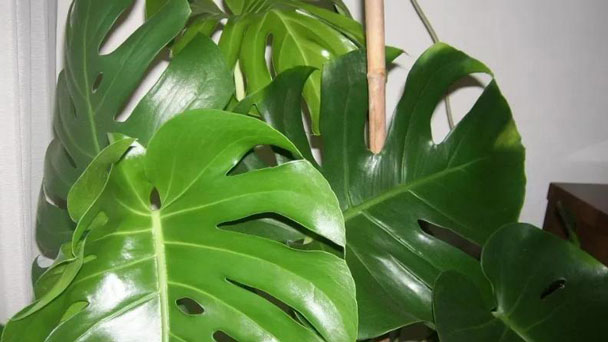
This is the mix I use with approximate measurements:
As you might expect from a jungle plant, Rhaphidophora Tetrasperma thrives in humid conditions, but is not demanding. Rhaphidophora Tetrasperma will prefer a pebblestone tray or humidifier, but normal household humidity will do. Occasional sprays can also help.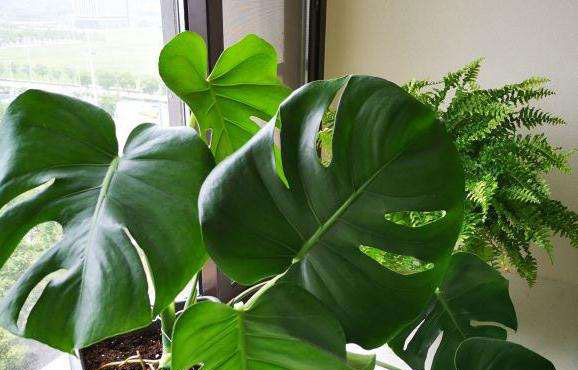
The easiest way to get rid of mealybugs is to swab them with a cotton swab dipped in alcohol. Lighter insecticides can also be used to treat larger pests. For prevention, occasional spraying of neem oil is an easy way to stop mealybugs from eating plants. (Find more indoor plants for low light here.)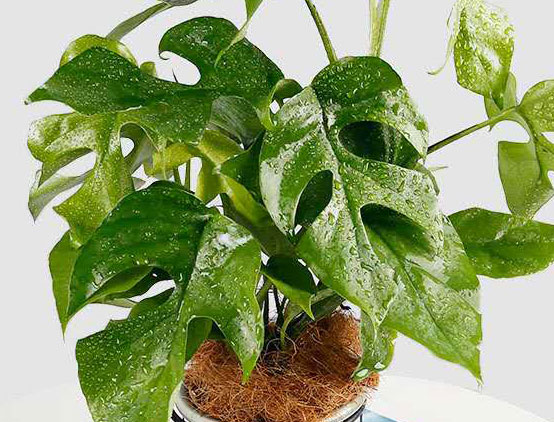
Read Next:
Rhaphidophora Tetrasperma PictureRhaphidophora Tetrasperma InfoRhaphidophora tetrasperma Native HabitsRhaphidophora Tetrasperma DistributionHow to Propagate Rhaphidophora tetraspermaHow to Care for Rhaphidophora Tetrasperma Uses of Rhaphidophora TetraspermaRhaphidophora Tetrasperma Common Pests/DiseasesRhaphidophora Tetrasperma Climbing Support
Rhaphidophora Tetrasperma Picture

Rhaphidophora Tetrasperma Info
| Scientific Name | Rhaphidophora tetrasperma |
| Common Name | Mini monstera |
| Origin | Native to Thailand and Malaysia in a variety of rainforest conditions |
| Height | 1.5 metres height / 1 metre spread |
| Light | Ideally, bright but indirect filtered light, can cope with lower light too |
| Water | Keep soil moist using water at room temperature |
| Soil | A free-draining organic potting mix |
| Fertilizer | regular fertilizing |
Rhaphidophora tetrasperma Native Habits
Rhaphidophora is a genus that contains around 100 species native to south-east Asia. This mini monstera is considered an exotic jungle plant, but it can also be found in rainforests or dry climates making it an easy-to-grow houseplant. However, hanging these plants can result in smaller leaves without splits. Rhaphidophora tetrasperma is a rare tropical aroid, having small and graceful ornamental leaves with 6 inches (15 cm) split lobes. Their leaves look like a smaller version of Monstera Deliciosa, which is why it is mostly referred to by the name Mini Monstera. However, it is a completely different species, with no edible fruits. Depending on the environmental conditions, these plants can reach up to 12 feet (3.65 meters) in height. As a houseplant, it is usually preferred at 4 to 5 feet (1-1.5 meters) tall. They are vining plants, having aerial roots that climb trees or whatever is good for them to stabilize as they grow, such as trellises.Rhaphidophora Tetrasperma Distribution
The Rhaphidophora tetrasperma is a native plant of Thailand and Malaysia. Botanists consider this to be a rare species to find growing wild, but it has been known to science since the late 1800s.How to Propagate Rhaphidophora tetrasperma
Rhaphidophora tetrasperma propagation with Cuttings
When you start to notice the leaf nodes on the rhaphidophora Tetraspermas plant, this is the perfect opportunity to turn it into a new little plant. Breeding these mini turtleback bamboo plants is very easy, as all you need to do is take a tuber from the mother plant and place it in a glass of water or the roots in potting soil. (Read More: How to Propagate Rhapidophora Tetrasperma (Mini Monstera) - 2023 Guide)Make sure you have one or more leaf nodes on your cuttings. Roots will form from the lowest leaf nodes, so be sure to place them below the surface of the water or soil.
If you choose to breed your rhaphidophora tetrasperma plant in water, you should keep the environment fresh and change the water at least once a day. When the roots are about 1-2 inches (2-5 cm) long, the cut will be ready to transfer to the potting mixture in a few weeks.
But for cuttings that have been placed in the mixture since breeding, it takes about a month to take root. During this time, you need to keep it active and then very carefully check the plant for any resistance. If there are, that means the roots have developed and are ready to be nursed as a new Rhaphidophora Tetrasperma plant.

How to Care for Rhaphidophora Tetrasperma
- Light Care
- Soil Care
This is the mix I use with approximate measurements:
- 1/2 potting soil. I alternate between Ocean Forest & Happy Frog.
- 1/2 coco fiber.
- Add in a few handfuls of coco chips (similar to orchid bark) and a few handfuls of compost.
- End by top dressing with a 1/4 – 1/2″ layer of worm compost.
- 3 alternate mixes:
- 1/2 potting soil, 1/2 orchid bark or coco chips or
- 3/4 potting soil, 1/4 pumice or perlite or
- 1/2 potting soil, 1/2 coco fiber or peat moss
- Water Care
- Temperature and Humidity Care
As you might expect from a jungle plant, Rhaphidophora Tetrasperma thrives in humid conditions, but is not demanding. Rhaphidophora Tetrasperma will prefer a pebblestone tray or humidifier, but normal household humidity will do. Occasional sprays can also help.
- Fertilizer Care
- Pruning Care

Uses of Rhaphidophora Tetrasperma
Rhaphidophora tetrasperma is commonly sold as a tabletop plant. As it grows, it’ll become a floor plant. It can be trained to grow on a moss pole, trellis, hoop, piece of bark, etc. While this plant has no medicinal uses and is not edible, it provides a beautiful display when allowed to climb. Place it against a trellis or other support and enjoy the resulting column of green.Rhaphidophora Tetrasperma Common Pests/Diseases
For the most part, Rhaphidophora Tetrasperma is a resilient plant that can resist most pests and diseases, but there are a few things to watch out for. Knowing which diseases are most common can help you prepare to deal with these problems as they arise. In most cases, some precautions can also be taken.- Spider Mites
- Root Rot
- Powder Pest
The easiest way to get rid of mealybugs is to swab them with a cotton swab dipped in alcohol. Lighter insecticides can also be used to treat larger pests. For prevention, occasional spraying of neem oil is an easy way to stop mealybugs from eating plants. (Find more indoor plants for low light here.)

Rhaphidophora Tetrasperma Climbing Support
These need to be climbed if you want the best looking healthy plants. You can use moss poles, whether you make them yourself or buy them, latticework, which is basically any place you can hold a plant and give the air roots a place to grab hold of. If you like the look of the moss pole as much as we do, then we recommend you make your own.Read Next:
- Monstera Lechleriana Care Guide 2021
- Monstera Borsigiana VS Monstera Deliciosa
- How to Grow and Care for Split Leaf
- How to Grow and Care for Monstera Obliqua Plant
- Philodendron Monstera Care & Propagation
- Rhaphidophora Tetrasperma (Mini Monstera) Care Guide
- Rhaphidophora Tetrasperma (Mini Monstera) Profile
- Best 15 Indoor Plants for Low Light 2021
Latest Updated
- Benefits of Bugleweed - 7 Science-backed Health Benefits
- Bugleweed Dangers & Side Effects - Is It Poisonous?
- How to Plant Evergreen Trees - What You Should Know
- When to Plant Evergreens - Grow Guide for Evergreen Trees
- 12 Wonderful Evergreen Shrubs for Your Garden
- 12 Popular Evergreen Plants with Pictures for Beginners
- When And How To Prune A Lilac Bush Like a Pro
- How to Grow & Care for Lilac Vine (Hardenbergia Violacea)
- Japanese Lilac Tree (Syringa Reticulata) Care & Propagation Guide
- Shumard Oak Pros and Cons - What to Know
Popular Articles
- Winter maintenance of Antirrhinum Majus
- How to Grow Terminalia Mantaly Tree
- How to Grow and Care for Crossostephium Chinense
- How to grow Antirrhinum Majus in spring
- Peristeria Elata (Dove Orchid) Profile: Info & Care Guide
- Underwatered Snake Plant (Sansevieria Trifasciata) - Signs And How To Fix
- How to Care for Brazilian Jasmine Plant (Mandevilla Sanderi)
- How to Grow & Care for Graptopetalum Purple Delight in Summer
- Rosa Chinensis (China Rose): Plant Growing & Care Tips
- How to Care for Baby Sun Rose (Aptenia Cordifolia)
